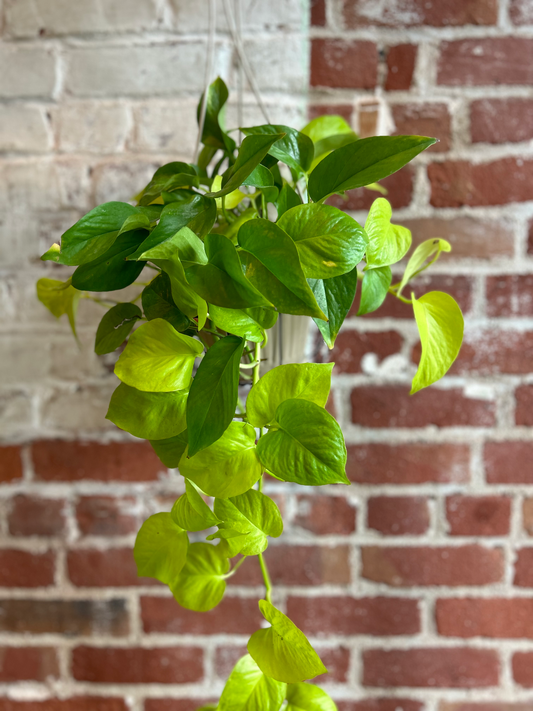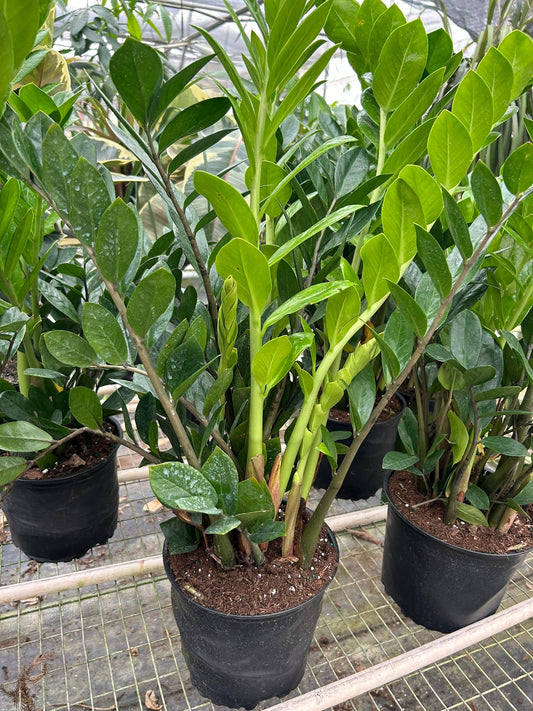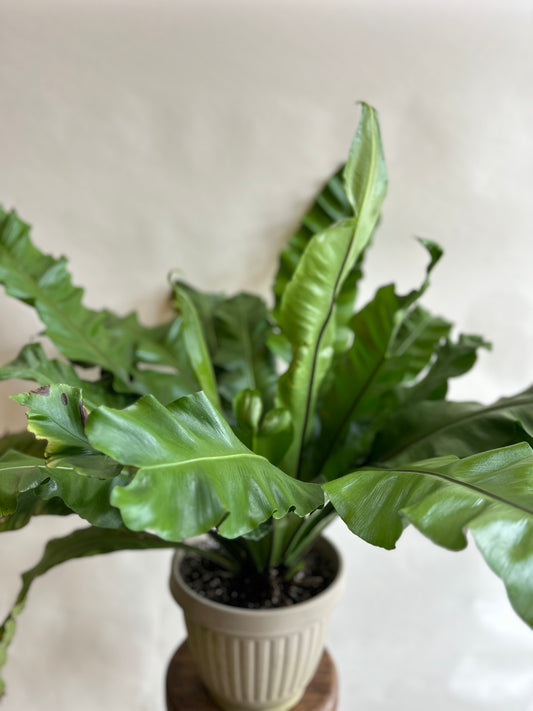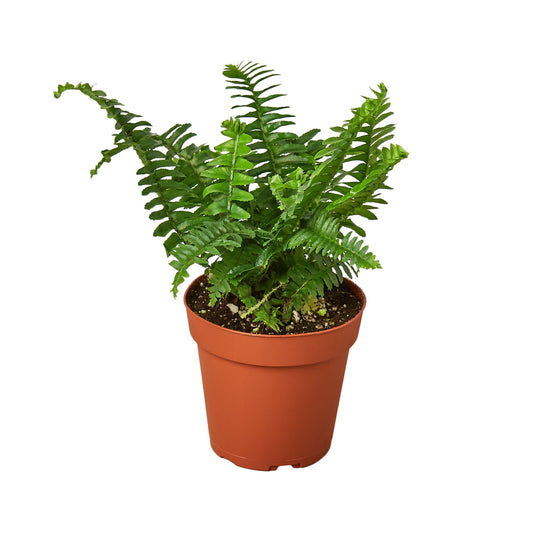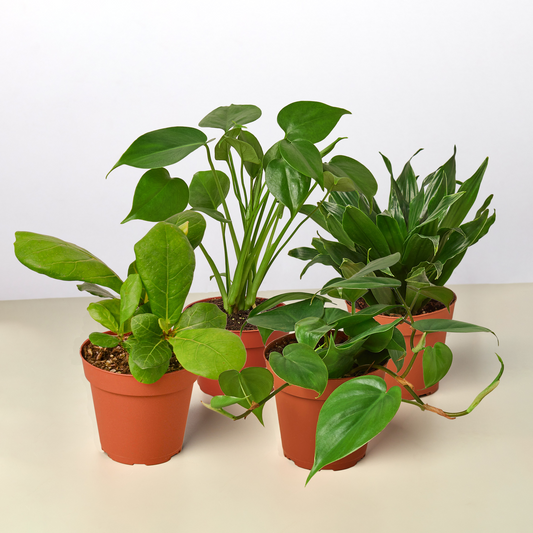How to Grow and Care for Tradescantias
Cafe Planta Team
Tradescantias are often the unsung heroes in the world of houseplants. With their vibrant colors, easy-going nature, and the ability to grow almost anywhere, they are a favorite among plant parents. If you're looking to add a pop of color and charm to your home, Tradescantias might just be the perfect choice.
In this article, we'll walk you through everything you need to know about growing and caring for Tradescantias. From selecting the right type and potting them properly, to keeping pests at bay and incorporating them into your home decor, we've got you covered. Let's get started!
Choosing the Right Tradescantia Variety
With several varieties of Tradescantia available, choosing the right one for your home can be a delightful challenge. They all share similar care requirements, but each has its unique charm, so it largely depends on your personal preferences.
Consider these popular varieties:
- Tradescantia zebrina: Known for its striking purple and silver-striped leaves, this variety is perfect if you're looking to add a little drama to your plant collection.
- Tradescantia fluminensis: Often called the Inch Plant, this one has small, glossy green leaves and is great for filling in spaces with its trailing growth habit.
- Tradescantia pallida: Also known as the Purple Heart, this variety boasts deep purple leaves and is quite the showstopper.
When selecting your Tradescantia, consider the lighting conditions in your home. Most Tradescantias thrive in bright, indirect light, but some can adapt to lower light levels. If you're unsure, ask your local plant shop about the specific light needs of the variety you're interested in.
Potting and Soil Requirements
Tradescantias are not particularly fussy about their potting conditions, but providing the right environment will ensure they thrive. Start with a good quality potting mix. A standard houseplant potting soil works well, but you can add a bit of perlite or sand to improve drainage. These plants don't like to sit in waterlogged soil.
Here’s a quick guide to potting your Tradescantia:
- Choose the right pot: Make sure it has drainage holes to prevent water from accumulating at the bottom. This helps avoid root rot, which Tradescantias are prone to.
- Fill the pot: Add the potting mix, filling it halfway. Gently place your Tradescantia into the pot, spreading out the roots.
- Top up the soil: Fill the rest of the pot with soil, making sure to leave a little room at the top for watering.
- Water thoroughly: Give it a good watering to help the soil settle, but ensure it drains well.
Remember, Tradescantias grow quickly, so you may need to repot them every year or two. If you notice roots growing out of the drainage holes or the plant becoming unstable, it's time for a bigger pot.
Watering and Humidity Needs
While Tradescantias are relatively low-maintenance, getting the watering right is important. They prefer to be kept slightly moist but not soggy. Overwatering can lead to root rot, whereas underwatering may cause the leaves to become dry and crispy.
Here’s how to keep your Tradescantia happy with watering:
- Check the soil: Before watering, check if the top inch of the soil is dry. If it feels dry, it’s time to water.
- Water evenly: Water the plant thoroughly, allowing water to drain from the bottom. Make sure all the soil is moistened.
- Adjust frequency: In the growing season (spring and summer), water more frequently. In the dormant season (fall and winter), you can reduce watering.
Tradescantias are not too demanding when it comes to humidity, but they do appreciate a bit more moisture in the air. If your home is particularly dry, especially during winter, consider using a humidifier or placing a tray of water near the plant to increase humidity.
Fertilizing for Growth
Fertilizing your Tradescantia can be a great way to promote healthy growth and vibrant foliage. These plants are not heavy feeders, so a balanced houseplant fertilizer every month or so during the growing season will suffice.
Here are some tips for fertilizing Tradescantias:
- Use a liquid fertilizer: Dilute it to half-strength and apply it during the spring and summer months.
- Avoid over-fertilizing: Too much fertilizer can lead to salt build-up in the soil and potentially harm the plant.
- Skip fertilizing in winter: During the plant’s dormant period, there’s no need to fertilize.
Keep an eye on the plant's response. If the leaves start to turn yellow, you might be over-fertilizing. In that case, hold off on feeding for a while and flush the soil with water to remove excess salts.
Dealing with Pests
Like most houseplants, Tradescantias can fall prey to pests such as spider mites, aphids, and mealybugs. The key to managing pests is early detection and treatment. Regular checks and cleaning can prevent infestations from getting out of hand.
Here’s how to tackle common pests:
- Inspect regularly: Check under the leaves and along stems for any signs of pests.
- Use natural remedies: A simple spray of water mixed with a few drops of dish soap can help remove pests. Neem oil is another effective natural pesticide.
- Keep the plant clean: Wiping down the leaves with a damp cloth can remove dust and potential pests.
If you notice a severe infestation, isolating the plant can prevent the pests from spreading to other houseplants. You can also consult with your local plant shop for additional pest control options.
Pruning and Propagation
Tradescantias are known for their rapid growth, which means they can quickly become leggy or overgrown. Regular pruning helps keep them looking neat and encourages bushier growth. Plus, it's the perfect opportunity to propagate new plants!
Here’s how to prune and propagate Tradescantias:
- Trim back stems: Use clean scissors to cut back any leggy or overgrown stems. Aim for just above a leaf node to encourage new growth.
- Propagate in water: Take cuttings from healthy stems and place them in a glass of water. They should root in a few weeks.
- Plant rooted cuttings: Once roots are a couple of inches long, plant the cuttings in soil and care for them as you would a mature plant.
Pruning not only keeps your Tradescantia looking its best, but it also provides a never-ending supply of new plants to share with friends or expand your collection.
Incorporating Tradescantias into Your Home Decor
Tradescantias are not just easy to care for, but they also make beautiful additions to your home decor. Their trailing vines and vibrant colors can add a touch of nature and elegance to any space.
Here are some creative ways to incorporate Tradescantias into your interior design:
- Hanging baskets: Tradescantias look stunning in hanging baskets, where their trailing vines can cascade down beautifully.
- Bookshelf accents: Place a Tradescantia on a shelf to add a splash of color among your books and knick-knacks.
- Table centerpieces: Use a Tradescantia as a centerpiece for your dining or coffee table. Its vibrant foliage can make a striking focal point.
With their ability to thrive in a variety of conditions, Tradescantias can fit seamlessly into almost any room. Experiment with different placements and enjoy the natural beauty they bring into your home.
Common Issues and How to Fix Them
Even with the best care, you might encounter a few issues with your Tradescantia. Don't worry—most problems have simple solutions. Here are some common issues and how to fix them:
- Yellowing leaves: This can be a sign of overwatering. Check the soil moisture and adjust your watering schedule if needed.
- Leggy growth: If your plant is growing long and spindly, it may need more light. Move it to a brighter spot.
- Brown leaf tips: This could be due to low humidity. Increase humidity around the plant or make sure you're not underwatering.
If you run into a problem that’s not on this list, a quick search or a visit to your local plant shop can provide more tailored advice. Remember, troubleshooting is part of the plant parenting journey!
Tradescantias and Pets
For those with pets, it's important to know whether your houseplants are safe for them. Tradescantias can be mildly toxic to cats and dogs, causing stomach upset if ingested. If you have curious pets, it's best to place these plants out of their reach.
Here are some tips to keep your pets and plants safe:
- Elevate plants: Use hanging baskets or high shelves to keep Tradescantias away from pets.
- Monitor interactions: Watch for any signs of your pet chewing on the plant and intervene if necessary.
- Consider pet-safe alternatives: If you're worried, look for pet-friendly plants that offer similar aesthetics.
Pet safety is essential, so always err on the side of caution. If you suspect your pet has ingested any part of a Tradescantia, contact your vet immediately.
Final Thoughts
Growing and caring for Tradescantias can be a rewarding experience, offering both visual appeal and a sense of satisfaction. With the right environment, these resilient plants can thrive and beautify your home for years to come.
At Cafe Planta, we're passionate about helping you find the perfect houseplants and providing the support you need to care for them. If you have any questions or need more guidance, feel free to email us, or reach out on our Instagram. We believe in the power of plants to bring joy and connection, and we're here to help you on your plant journey.


